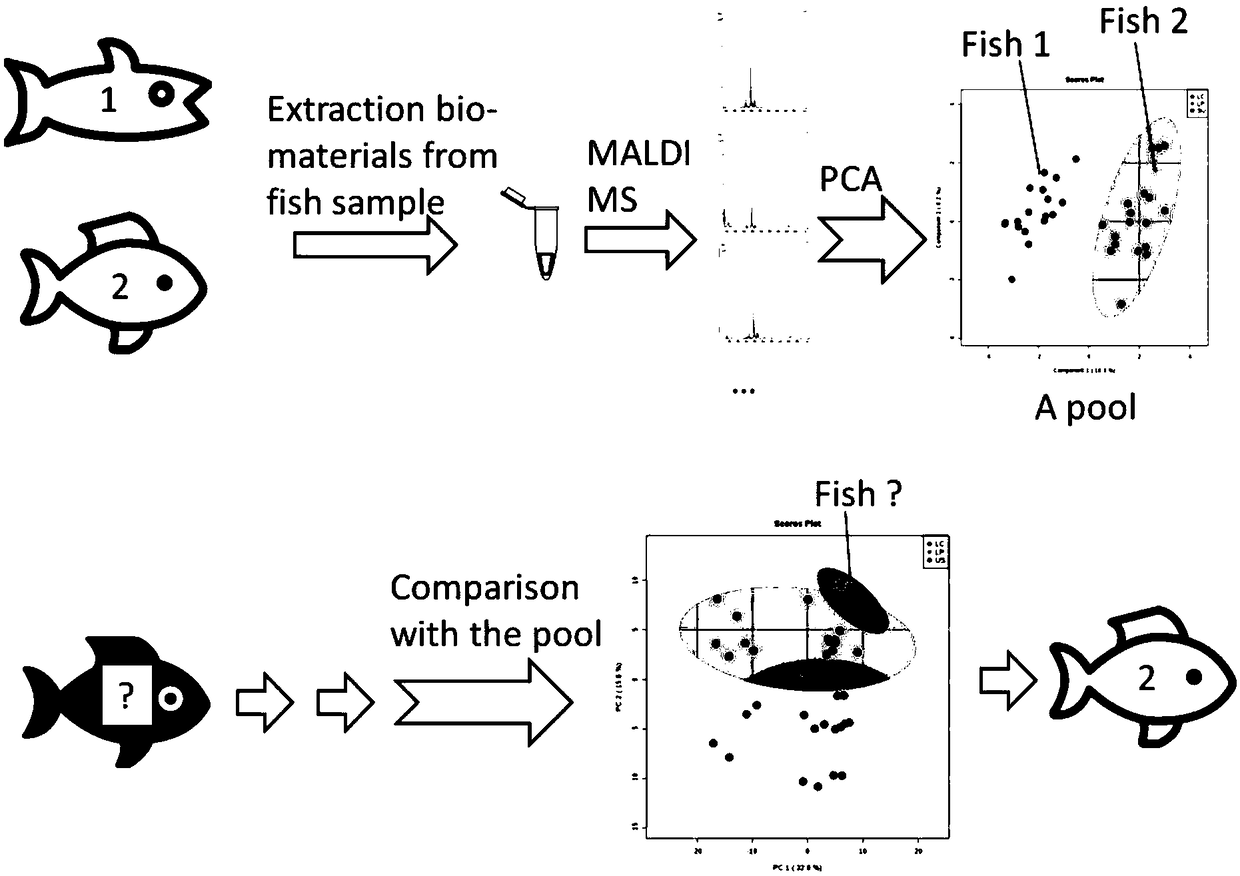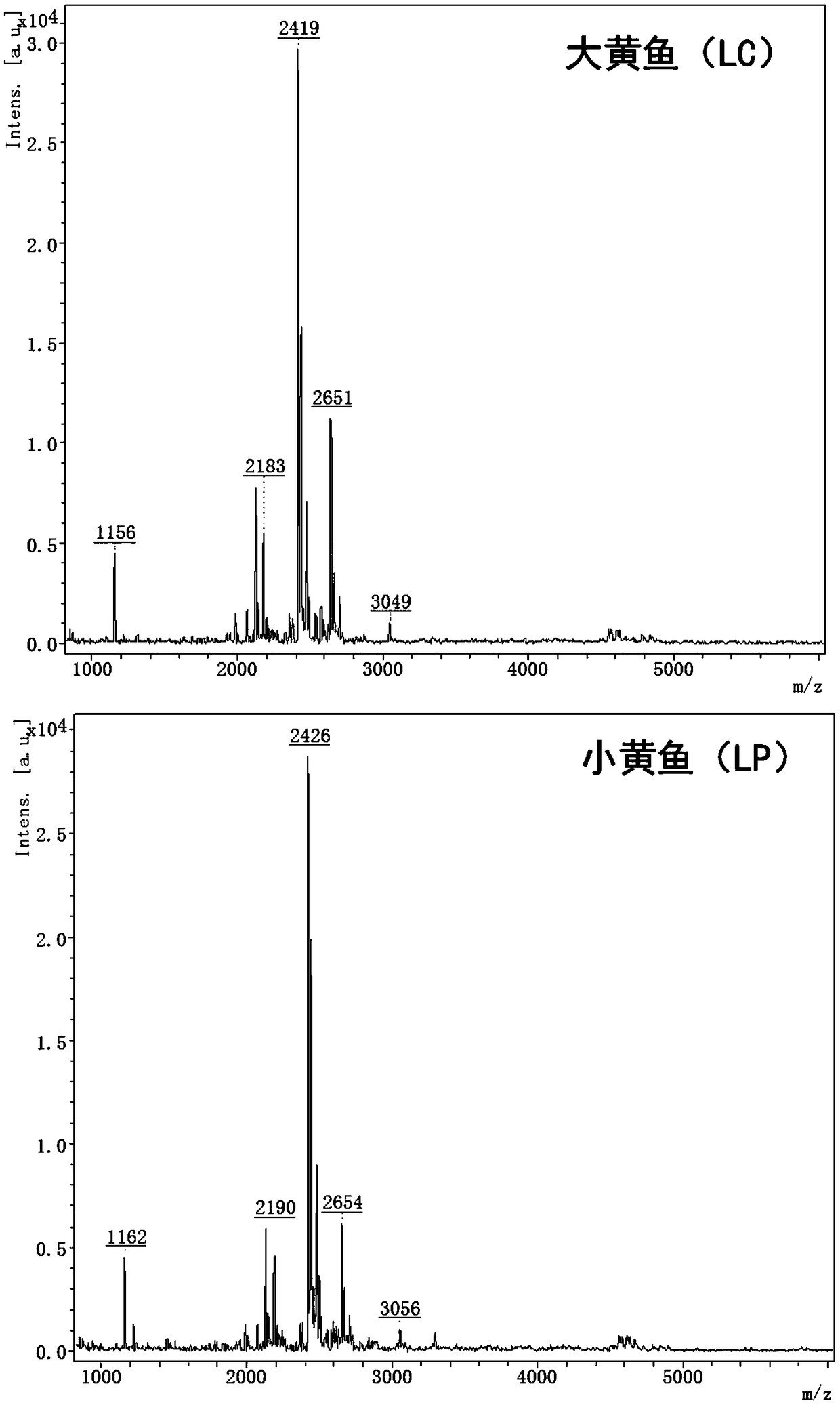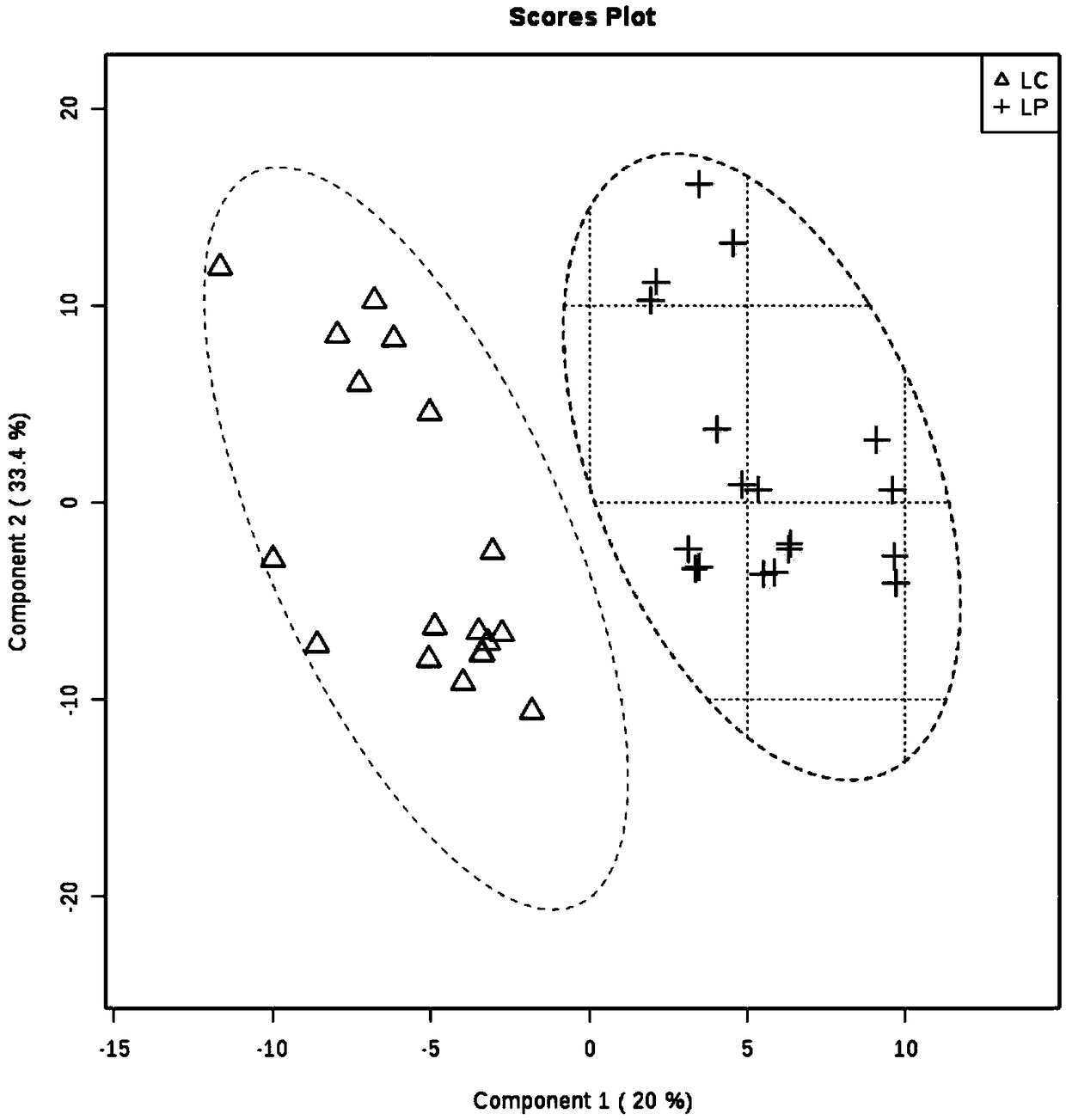Rapid classification and identification method for sea foods in close genetic relationship
A rapid classification and identification method technology, which is applied in the fields of analytical chemistry, mass spectrometry and rapid analysis, can solve the problems that scientific methods are yet to be developed, and achieve rapid classification and identification, and the effect of simple and easy methods
- Summary
- Abstract
- Description
- Claims
- Application Information
AI Technical Summary
Problems solved by technology
Method used
Image
Examples
Embodiment 1
[0054] Examples of detection and identification:
[0055] Step a, collecting samples;
[0056] This embodiment takes the identification of large yellow croaker and small yellow croaker as an example. These two fishes are very similar in appearance and are easy to confuse, but the economic value of the two fishes is very different.
[0057] (1) Take the skins of large yellow croaker and small yellow croaker as samples to be tested, and remove the subcutaneous tissue and scales for later use.
[0058] (2) Take 0.2g of two kinds of fish skins respectively, add 2mL of 1.3mol / L sodium hydroxide solution to each fish skin, put in a 15ml centrifuge tube and shake overnight at room temperature, adjust the HS-3 vertical mixer to the maximum shaking speed, and then Take 150 μL of the solution and adjust the pH value to neutral or slightly acidic with 6 mol / L HCl solution.
[0059] (3) Using Thermo Scientific C18 Spin Column is used for desalination treatment. (4) Sample detection, ...
Embodiment 2
[0067] blind identification
[0068] The unknown fish was compared and identified with short snout sole, narrow tongue sole, jiaoshi tongue sole, half smooth tongue sole and the large yellow croaker and small yellow croaker in the examples.
[0069] Firstly, the skins of unknown fish and tongue sole, tongue sole narrow body, tongue sole Jiaoshi and half smooth tongue sole were taken as the samples to be tested, and they were soaked in sodium hydroxide solution respectively.
[0070] Take a small amount (100 to 200 microliters) of the processed sample. Use hydrochloric acid solution to adjust the pH to neutral or slightly acidic; figure 1 shown).
[0071] Step b, sample detection, is detected by matrix-assisted laser desorption ionization mass spectrometry.
[0072] Add the sample obtained in step a dropwise on the MALDI target plate, use SA as the matrix, and perform mass spectrometry detection.
[0073] In step c, 6 pieces of the same fish are taken as skin samples, and e...
PUM
| Property | Measurement | Unit |
|---|---|---|
| molecular weight | aaaaa | aaaaa |
Abstract
Description
Claims
Application Information
 Login to View More
Login to View More - R&D
- Intellectual Property
- Life Sciences
- Materials
- Tech Scout
- Unparalleled Data Quality
- Higher Quality Content
- 60% Fewer Hallucinations
Browse by: Latest US Patents, China's latest patents, Technical Efficacy Thesaurus, Application Domain, Technology Topic, Popular Technical Reports.
© 2025 PatSnap. All rights reserved.Legal|Privacy policy|Modern Slavery Act Transparency Statement|Sitemap|About US| Contact US: help@patsnap.com



